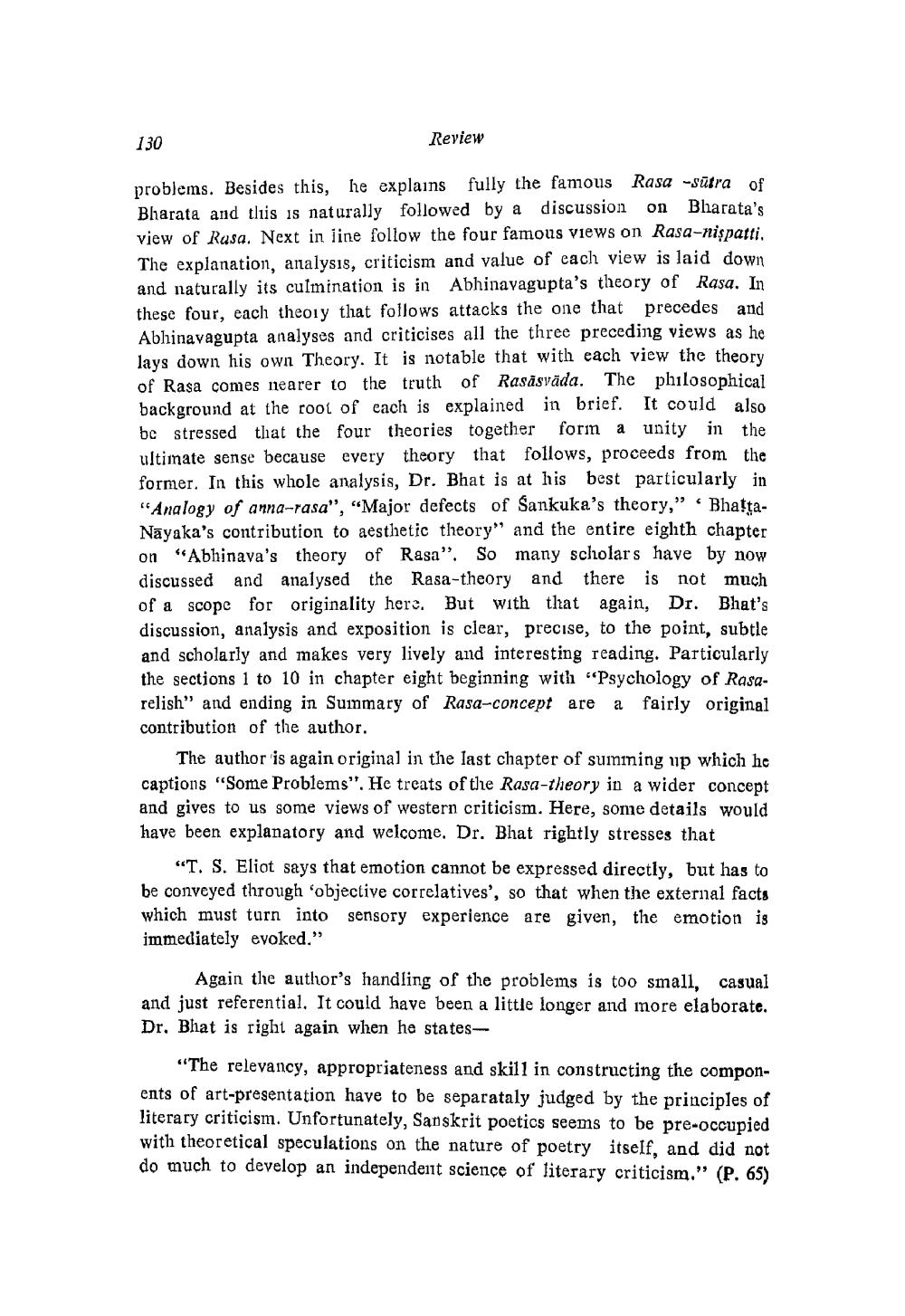________________
130
Review
problems. Besides this, he explains fully the famous Rasa -sūtra of Bharata and tliis is naturally followed by a discussion on Bharata's view of Rasa. Next in line follow the four famous views on Rasa-nispatti. The explanation, analysis, criticism and value of each view is laid down and naturally its culmination is in Abhinavagupta's theory of Rasa. In these four, each theory that follows attacks the one that precedes and Abhinavagupta analyses and criticises all the three preceding views as he lays down his own Theory. It is notable that with each view the theory of Rasa comes nearer to the truth of Rasāsvāda. The philosophical background at the root of each is explained in brief. It could also bc stressed that the four theories together form a unity in the ultimate sense because every theory that follows, proceeds from the former. In this whole analysis, Dr. Bhat is at his best particularly in "Analogy of anna-rasa", "Major defects of Sankuka's theory," BhattaNayaka's contribution to aesthetic theory" and the entire eighth chapter on "Abhinava's theory of Rasa". So many scholars have by now discussed and analysed the Rasa-theory and there is not much of a scope for originality hers. But with that again, Dr. Bhat's discussion, analysis and exposition is clear, precise, to the point, subtle and scholarly and makes very lively and interesting reading. Particularly the sections 1 to 10 in chapter eight beginning with "Psychology of Rasarelish" and ending in Summary of Rasa-concept are a fairly original contribution of the author.
The author is again original in the last chapter of summing up which he captions "Some Problems". He treats of the Rasa-theory in a wider concept and gives to us some views of western criticism. Here, some details would have been explanatory and welcome. Dr. Bhat rightly stresses that
“T. S. Eliot says that emotion cannot be expressed directly, but has to be conveyed through 'objective correlatives', so that when the external facts which must turn into sensory experience are given, the emotion is immediately evoked.”
Again the author's handling of the problems is too small, casual and just referential. It could have been a little longer and more elaborate. Dr. Bhat is right again when he states
“The relevancy, appropriateness and skill in constructing the components of art-presentation have to be separataly judged by the principles of literary criticism. Unfortunately, Sanskrit poetics seems to be pre-occupied with theoretical speculations on the nature of poetry itself, and did not do much to develop an independent science of literary criticism." (P. 65)




